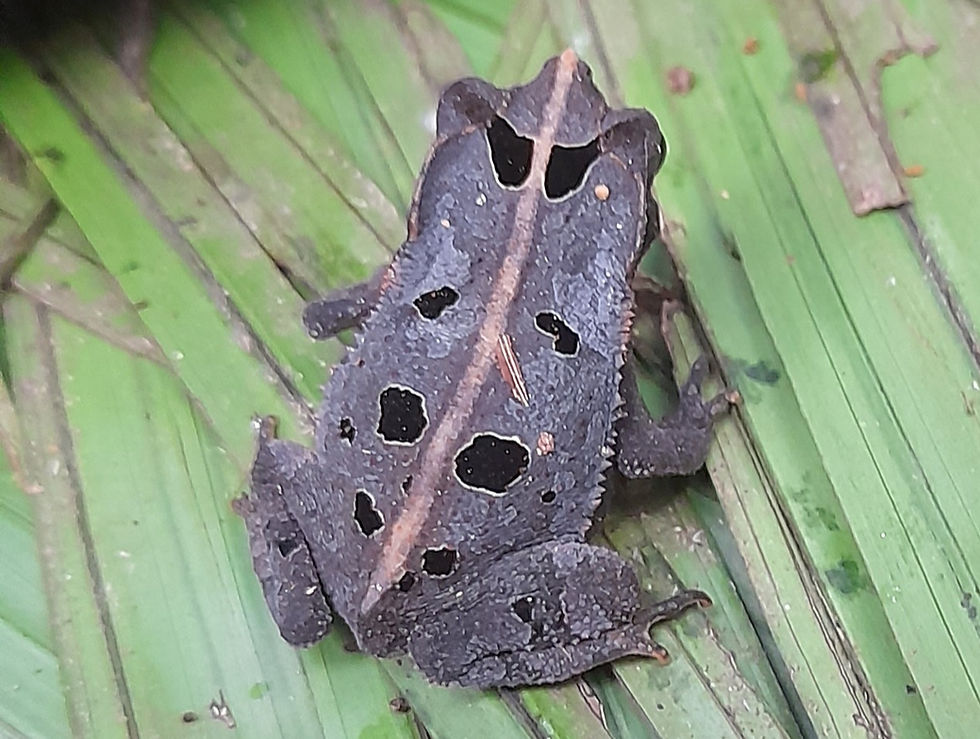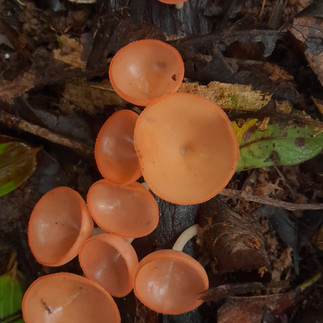How Wildlife Works for All of Us: World Biodiversity Day 2025
- Wildlife Works
- May 29
- 3 min read
What do a frog, a fungus, and a forest elephant have in common? They’re all part of the vast and interconnected web of life we call biodiversity, and they’re all under threat.
As we mark World Biodiversity Day, we’re reminded that protecting life on Earth isn’t just about saving endangered animals. It’s about safeguarding the systems that make life possible for all of us.
What Is Biodiversity?
Biodiversity is the full spectrum of life on Earth: the variety of genes, species, and ecosystems that keep the planet running. It’s what purifies our water, pollinates our crops, enriches our soils, and regulates our climate. In short, it’s the foundation of human well-being.
And yet, we’re living through what scientists now call the Sixth Mass Extinction, a loss of species happening at rates far beyond natural background levels.
Nature at Work: Every Species Plays a Role
Biodiversity isn’t abstract. It’s alive, moving, breathing, and working constantly to keep ecosystems healthy. Take an example from one of the Wildlife Works horizon REDD+ projects in the Colombian Amazon:
Here, the white-lipped peccary, a pig-like mammal now in sharp decline, plays a vital role. These animals disperse seeds, feed large predators like jaguars, and create microhabitats for frogs through their foraging and wallowing. When they vanish, entire forest processes begin to break down.
Frogs, too, do more than fill the night with their music of croaks and ribbits. They help control disease by eating mosquitoes and other vectors, and they recycle nutrients across forest floors and wetlands. Their presence indicates a healthy environment.

Then there are the often-overlooked heroes: fungi. These decomposers are essential to soil health and carbon storage. When rains intensify due to climate change, fungi help keep vital nutrients from washing away. Most plants rely on fungal networks to absorb water and minerals. Fungi also offer food, medicine, and income for millions of people worldwide.
From creating the oxygen we breathe, to maintaining regional rainfall patterns that ensure global food security, biodiversity is humanity's life support system. A study in Nature Portfolio (2023) found that forest loss in one region can disrupt rainfall patterns thousands of miles away, demonstrating the interconnected and far-reaching consequences of biodiversity loss.
Biodiversity also plays a significant role in fighting climate change. For example, forest elephants in the Congo are some of our best warriors in the fight against climate change. By eating smaller plants, elephants reduce competition for soil nutrients and light, allowing larger trees to flourish and capture even more carbon out of the atmosphere. Scientists hypothesize that the presence of a megaherbivore like forest elephants is why the Congo Basin sequesters more carbon than the Amazon rainforest, even though the Amazon is about twice the size of the Congo Basin.
The Cost of Losing Biodiversity
Today, more than 1 million species are at risk of extinction. Of the 168,000+ species assessed by the IUCN, 28% are threatened.
What’s the cost of losing just one of these species? We know that when apex predators like lions disappear, ecosystems unravel. Herbivore populations can explode, leading to overgrazing and soil degradation. Smaller predators proliferate, creating imbalances that ripple outward.
One striking example: in parts of Africa, the disappearance of lions led to a surge in baboon populations. These baboons began raiding farms, threatening local food security. Families had to guard their fields, and children were pulled from school to help.
The loss of biodiversity doesn’t just harm nature—it disrupts lives, livelihoods, and cultures. Research from the World Economic Forum shows that at least 50% of global GDP is reliant on nature, and that climate change will significantly destabilize global trade.
What We're Doing About It
At Wildlife Works, we’re committed to reversing the tide. We protect some of the world’s most biodiverse forests, in partnership with the communities who call them home.
Our biodiversity teams spend long hours in the field documenting species, monitoring ecosystems, and identifying conservation priorities. This data guides our efforts to protect what remains.
We work to address the root cause s of biodiversity loss: land-use change, habitat destruction, overexploitation of natural resources, and climate change. By co-creating opportunities for sustainable livelihoods, we reduce pressure on forests, allowing wildlife and communities to thrive together.
A Future for All Life
Biodiversity is not a luxury; it’s a necessity. And once it’s gone, some of its benefits are also gone for good.
This World Biodiversity Day, we’re spreading the message that every creature counts. Whether it's a fungus or an elephant, protecting biodiversity means protecting our shared future.
Let’s keep standing up for nature, because when we protect biodiversity, we protect our life support system.
Help amplify this message by sharing this blog and video, and contribute to our work here.















